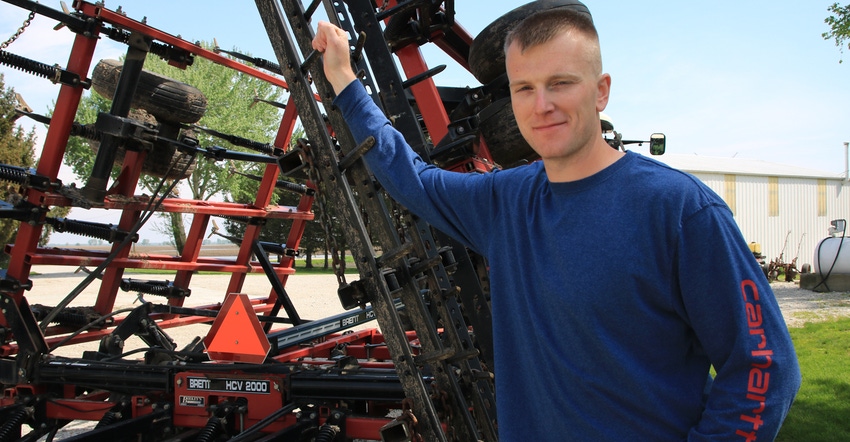
A harsh winter kept Macon County, Ill., farmer Mitchell Hinds busy this year as he donned his township road commissioner hat. He worked to plow the snow off rural roads extending from the Decatur suburb of Warrensburg up to the DeWitt County line, where the Hinds farm sits.
Hinds took over day-to-day operation on the 1,000-acre farm five years ago, shortly after he obtained an agricultural production degree from Lincoln Land Community College and his grandfather retired. Austin Township’s former road commissioner retired last year, handing down the job to Hinds and giving him “an interesting first day” on Jan. 1.
“You’ll sometimes get calls saying, ‘Why isn’t my road plowed yet?’” Hinds says. “Well, if you’re the only house on the road, we have other places we have to get to first.
“Outside of those rare calls, it’s pretty laid-back. It’s like farming. You’re your own boss. There are slow weeks where you work less than 20 hours, and then there are long weeks where you work more than 40.”
Hinds says his commissioner job hasn’t interfered with farming, as he has a township budget to employ part-time workers. He also has part-time help on the farm during harvest.
“In harvest, I have some help with trucking. For the most part, I try to be a one-man show as much as possible to save on costs,” Hinds says, adding that for safety, “If I’ve got something that might not be the safest thing to do, I wait till later.”
Hinds started farming with his grandfather at a young age and has worked to gradually evolve management plans to push for maximum yields.
“I wouldn’t say I brought what I learned in college back to the farm and changed everything up,” he says. “Ag production taught me to teach myself and made me curious about marketing. That stays with you as you aim to maximize your return.”
This summer, Hinds will graduate from Prairie Farmer’s Cultivating Master Farmers program, which he says has helped connect him with other farmers who are at the beginning of their careers.
While he’s currently renting and share-cropping his ground, he intends to buy land himself in the future. For now, he focuses on production and marketing.
“I don’t have any grain storage,” Hinds says. “Everything goes to town right after harvest. My marketing objective is really to presell as much of my grain as possible — usually I’m about 80% to 90% presold before harvest. I try to market most of my crop before fall, because elevator prices aren’t going to be high with the abundance of grain flowing in.”
He plants corn and Xtend soybeans from Stone Seed. Data recorded by FieldView has helped him make decisions over the years on population rates and hybrid selection. He sprays fungicide on more than 50% of his acres every year and has custom applicators apply fertilizer.
“I don’t mess with any of the fertilizer,” he says.
Hinds opts to save money by not being “brand blind” with equipment. For grain hauling, he’s kept two older semis in good condition rather than buy new haulers for $50,000-plus — a price he says “doesn’t pay.” To preserve the lifespan of a 20-year-old 8300 John Deere tractor he owns, he leased a Versatile tractor this year, as well as a combine from Kuhn’s Equipment in Arthur.
“That Versatile tractor was $10,000 to $15,000 less a year than if it were green. I’m not loyal to one direction or brand,” Hinds concludes. “We keep the Deere as a planter tractor, and it should last for quite a long time since we’re not pulling around tillage tools and working it really it hard.”
About the Author(s)
You May Also Like




